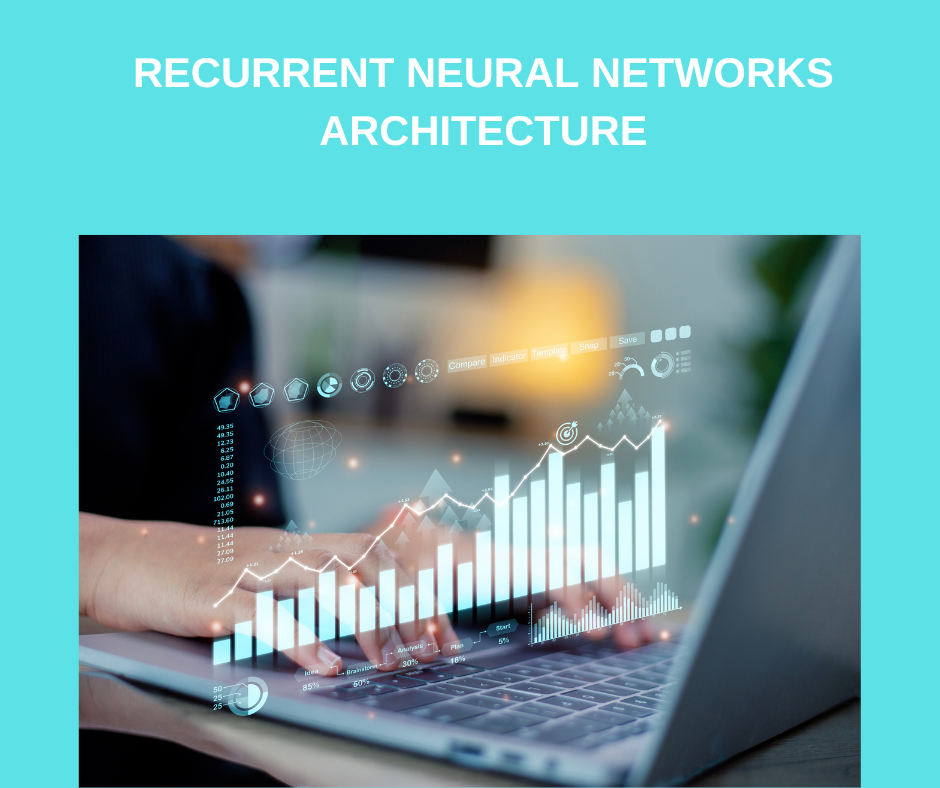Recurrent Neural Networks Architecture
 Ruhi Parveen
Ruhi Parveen
Recurrent Neural Networks (RNNs) are a type of artificial neural network specially designed to handle sequential data. Unlike traditional feedforward neural networks, RNNs are structured with connections that create loops, enabling them to retain a memory of previous inputs. This unique capability makes RNNs highly suitable for tasks where understanding context and dependencies over time is crucial, such as in language modeling, time series forecasting, and speech recognition. This article delves into the architecture of RNNs, their various types, applications across different domains, as well as their strengths and limitations.
Understanding Recurrent Neural Networks
Basic Structure of RNNs
An RNN consists of input nodes, hidden nodes, and output nodes, much like other neural networks. The key difference lies in the presence of loops within the network, which enable information to be passed from one step of the sequence to the next. This structure allows RNNs to use their internal state (memory) to process sequences of inputs.
Components of a Basic RNN
Input Layer: The input layer receives the input data at each time step. For instance, in a sequence of words, each word would be an input at each time step.
Hidden Layer: The hidden layer contains neurons that maintain a state based on both the current input and the previous hidden state. The recurrent connection in the hidden layer allows information to persist.
Output Layer: The output layer produces the output for each time step, which can be a prediction, classification, or any other form of processed data relevant to the task.
Types of Recurrent Neural Networks
1. Simple RNN
The simplest form of RNN, as described above, has limitations such as difficulty in capturing long-term dependencies due to issues like vanishing and exploding gradients. This makes them less effective for tasks requiring long-term context.
2. Long Short-Term Memory (LSTM)
LSTM networks are designed to overcome the limitations of simple RNNs by introducing a more complex architecture that includes cell states and gates. These gates control the flow of information, allowing the network to maintain long-term dependencies more effectively.
Components of LSTM
Cell State: The cell state is a memory that runs through the entire sequence, with only minor linear interactions.
Input Gate: Determines which information to add to the cell state.
Output Gate: Decides what the next hidden state should be.
The equations for LSTM are more complex than simple RNNs and involve multiple weight matrices and bias vectors.
3. Gated Recurrent Unit (GRU)
GRUs are a simpler variant of LSTM networks. They combine the forget and input gates into a single update gate, reducing the complexity while still addressing the vanishing gradient problem.
Components of GRU
- Update Gate: Controls the update of the hidden state.
GRUs perform comparably to LSTMs but with fewer parameters, making them faster to train.
Applications of RNNs
1. Natural Language Processing (NLP)
RNNs are widely used in NLP tasks such as language modeling, machine translation, sentiment analysis, and text generation. Their ability to understand context over sequences of words makes them suitable for these applications.
2. Time Series Prediction
RNNs are effective for forecasting and predicting time series data, such as stock prices, weather patterns, and sales forecasting, due to their ability to capture temporal dependencies.
3. Speech Recognition
In speech recognition, RNNs process audio sequences to transcribe spoken language into text. They can handle variations in speech patterns and accents by maintaining context across the sequence.
4. Video Analysis
RNNs are used in video analysis for tasks such as action recognition and video captioning. They process sequences of frames to understand the context and identify actions or generate descriptive captions.
Advantages of RNNs
1. Sequence Handling
RNNs excel at handling sequences of data, making them suitable for tasks where the order of data points is crucial. They can model temporal dependencies and context over time.
2. Memory of Previous Inputs
The internal state of RNNs acts as a memory, allowing them to retain information from previous inputs. This memory capability is essential for understanding context in sequential data.
3. Flexibility
RNNs can be applied to a variety of tasks, including classification, regression, and generation, across different domains such as text, speech, and video.
Limitations of RNNs
1. Vanishing and Exploding Gradients
During training, the gradients used to update the weights can become very small (vanishing) or very large (exploding).
2. Computationally Intensive
Training RNNs, especially LSTMs and GRUs, can be computationally intensive and time-consuming due to their complex architectures and sequential nature.
3. Difficulty in Parallelization
RNNs process data sequentially, making it challenging to parallelize computations. This limits their efficiency on modern parallel processing hardware.
Future of RNNs
1. Hybrid Models
Future developments may involve hybrid models that combine RNNs with other architectures such as Convolutional Neural Networks (CNNs) or Transformers. These hybrids can leverage the strengths of different models to improve performance on complex tasks.
2. Improved Training Techniques
Research is ongoing to develop better training techniques and optimization algorithms to address the issues of vanishing and exploding gradients. This includes advanced gradient clipping methods and adaptive learning rates.
3. Efficient Architectures
Efforts are being made to design more efficient RNN architectures that reduce computational complexity while maintaining performance. This includes exploring sparse and modular RNN designs.
Conclusion
Recurrent Neural Networks are a powerful class of neural networks designed for sequential data processing. With their ability to maintain context and memory over sequences, RNNs are well-suited for tasks such as language modelling, time series prediction, and speech recognition. While they have limitations like vanishing gradients and computational intensity, advancements like LSTMs and GRUs have significantly improved their performance. As research continues, we can expect further innovations in RNN architectures, training techniques, and applications, solidifying their role in the future of machine learning and artificial intelligence.For those interested in learning more about RNNs and related topics, consider exploring courses like Artificial Intelligence Course in Noida, Delhi, Mumbai, Indore, and other parts of India, which provide comprehensive insights into the application of neural networks in practical scenarios.
Subscribe to my newsletter
Read articles from Ruhi Parveen directly inside your inbox. Subscribe to the newsletter, and don't miss out.
Written by

Ruhi Parveen
Ruhi Parveen
I am a Digital Marketer and Content Marketing Specialist, I enjoy technical and non-technical writing. I enjoy learning something new.